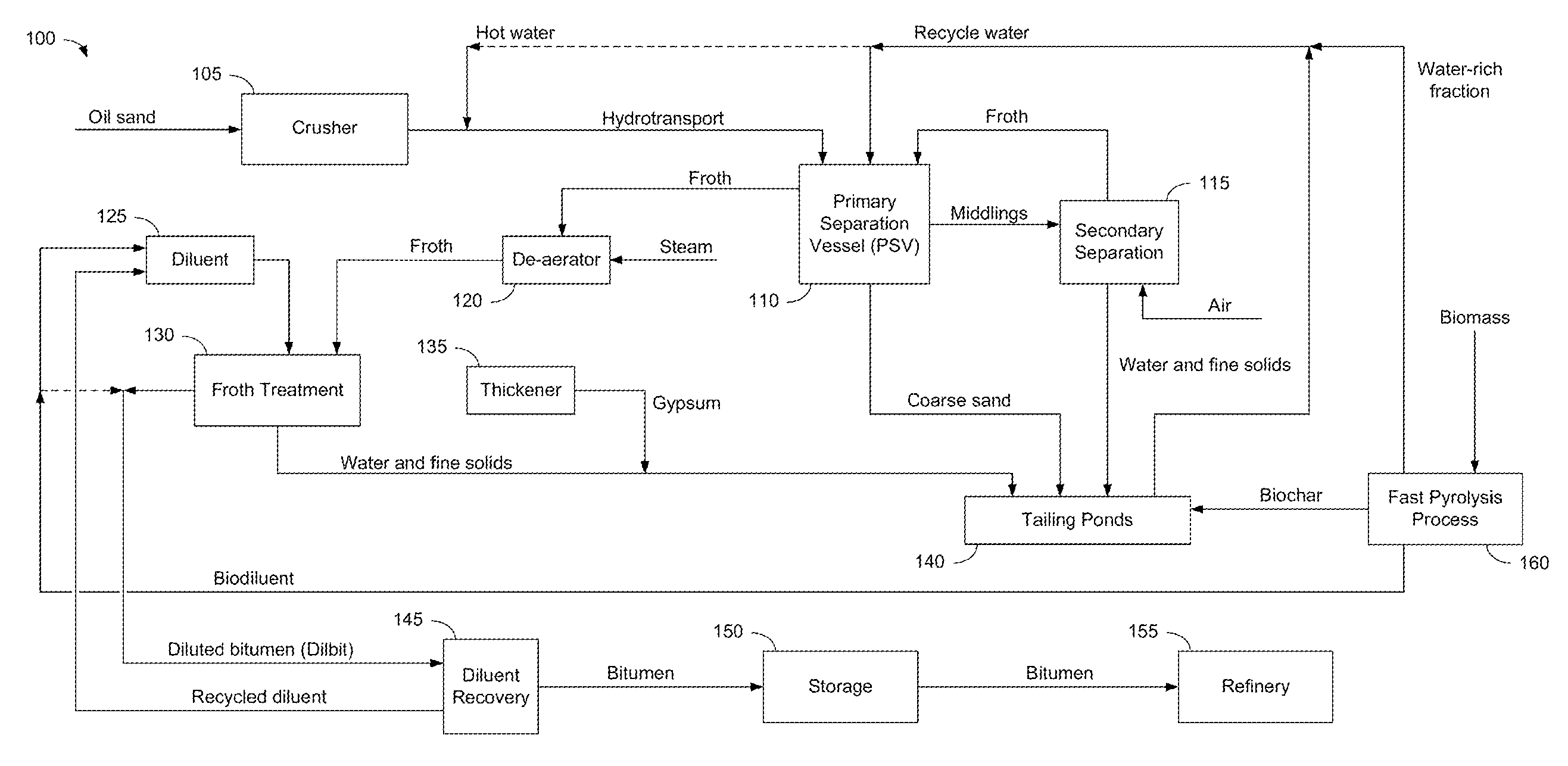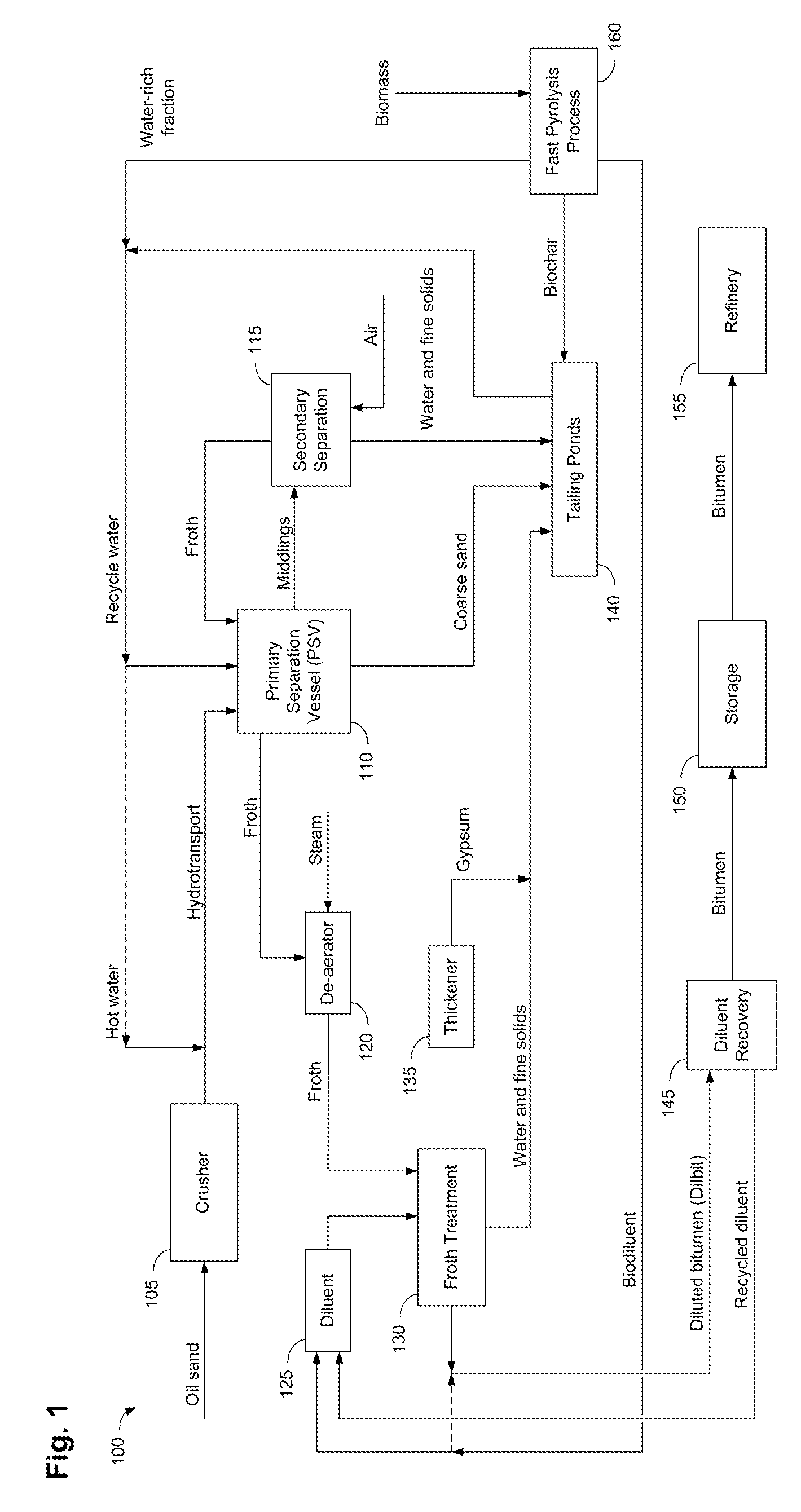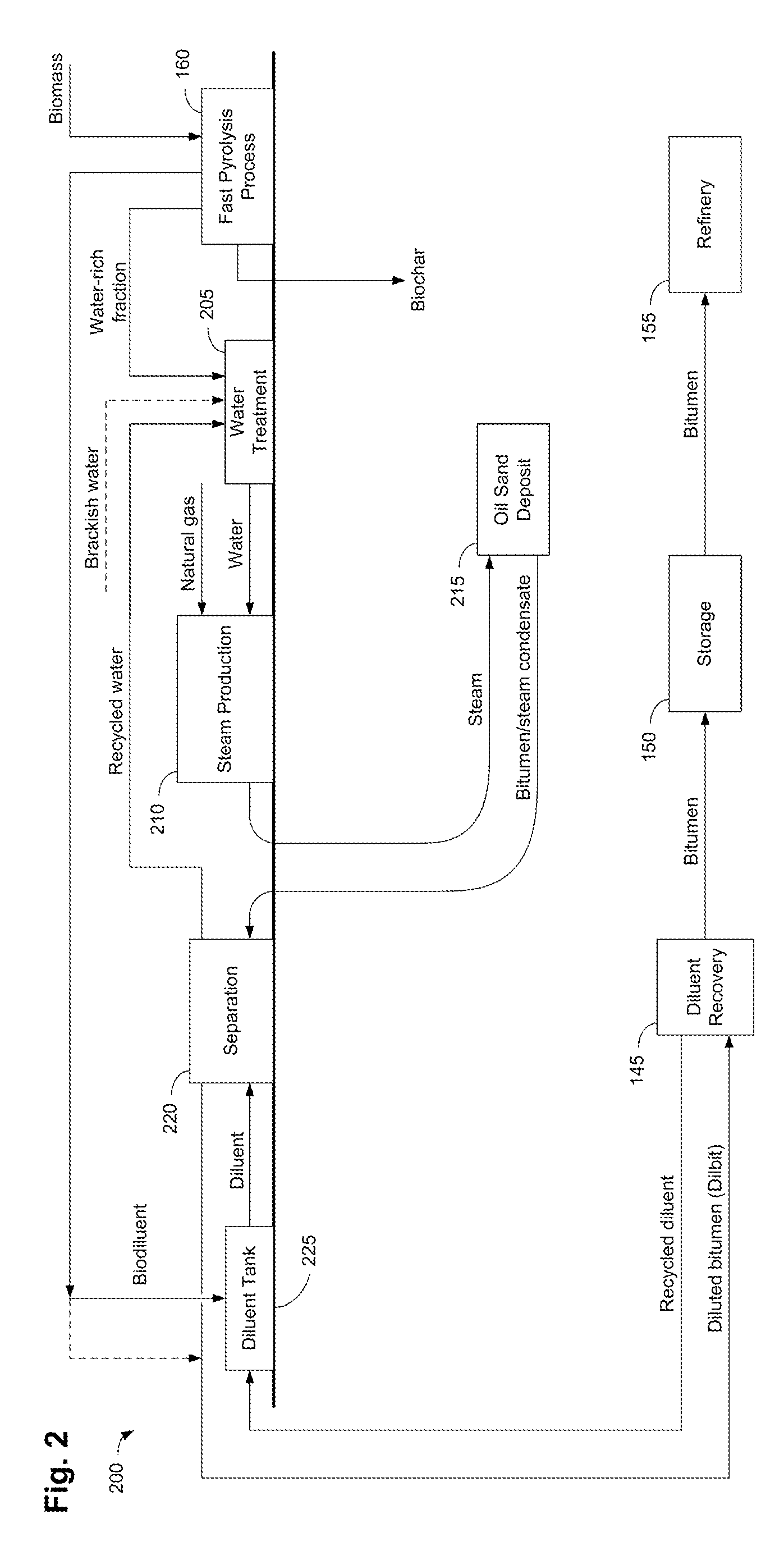Methods, apparatus, and systems for incorporating bio-derived materials into oil sands processing
- Summary
- Abstract
- Description
- Claims
- Application Information
AI Technical Summary
Benefits of technology
Problems solved by technology
Method used
Image
Examples
example 1
[0172]Simulated oil sands bitumen, biodiluent and hydrocarbon diluent blends were created and analyzed to determine pipeline quality. A sample of Western Canadian Select (WCS) diluted crude was heated to 210° C. and distilled at atmospheric conditions to remove hydrocarbon diluent and recover crude according to modified ASTM D2892. Asphalt binder (PG 58-22) was heated on a hot plate until liquid and added to the recovered crude to create a simulated oil sands bitumen (65 wt % asphalt binder and 35 wt % bitumen) with a viscosity profile similar to a typical Athabasca bitumen (Attanasi & Meyer, 2007).
[0173]A particular biodiluent mixture was produced by heating and combining wood-derived pyrolysis oil fractions 1 through 4. The fractions were produced using a pilot scale fast pyrolysis system described in U.S. Pat. No. 8,100,990.
[0174]The density and viscosity profile of the simulated bitumen, biodiluent and recovered petroleum diluent are found in Table 2.
T...
example 2
Simulated Bitumen and Biodiluent Blend Density and Viscosity Profiles
[0178]Simulated bitumen and biodiluent blends were created to determine their viscosity profile without hydrocarbon diluent. A sample of Western Canadian Select (WCS) diluted crude was heated to 210° C. and distilled at atmospheric conditions to remove hydrocarbon diluent and recover crude according to modified ASTM D2892. Asphalt binder (PG 58-22) was heated on a hot plate until liquid and added to the recovered crude to create a simulated oil sands bitumen (65 wt % asphalt binder and 35 wt % bitumen) with a viscosity profile similar to a typical Athabasca bitumen (Attanasi & Meyer, 2007).
[0179]A particular biodiluent mixture was produced by heating and combining wood-derived pyrolysis oil fractions 1 through 4. The fractions were produced using a pilot scale fast pyrolysis system described in U.S. Pat. No. 8,100,990.
[0180]Various biodiluted bitumen samples were created containing 0, 2, 5 or 10 wt % biodiluent. Th...
PUM
| Property | Measurement | Unit |
|---|---|---|
| Processing temperature | aaaaa | aaaaa |
| Processing temperature | aaaaa | aaaaa |
| Viscosity | aaaaa | aaaaa |
Abstract
Description
Claims
Application Information
 Login to View More
Login to View More - R&D
- Intellectual Property
- Life Sciences
- Materials
- Tech Scout
- Unparalleled Data Quality
- Higher Quality Content
- 60% Fewer Hallucinations
Browse by: Latest US Patents, China's latest patents, Technical Efficacy Thesaurus, Application Domain, Technology Topic, Popular Technical Reports.
© 2025 PatSnap. All rights reserved.Legal|Privacy policy|Modern Slavery Act Transparency Statement|Sitemap|About US| Contact US: help@patsnap.com



